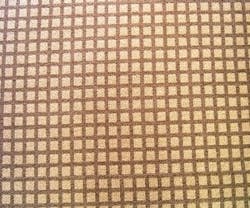Broadloom vs. Modular: The Green Angle
Broadloom has been around longer than its modular counterpart, and it has the design advantage of being able to create a clean, tailored look. From a green perspective, the technology exists to separate the yarn from the backing, which creates a closed-loop recycling program – yarn is recycled into yarn, and backing is recycled into backing. Building owners and managers also like the few-dollars-per-yard cost advantage that broadloom carpet brings to their budgets. The downsides remain that broadloom is more expensive to ship and more difficult to install in occupied spaces.
Modular carpet has become very popular in recent years due to the fact that it’s shipped in boxes via standard freight vs. as rolls, there’s less wasted product on the install, and it’s easy to replace damaged sections of carpet. But, the modular carpet trend is slowing down – perhaps in part because facilities professionals are tired of the modular design.
It Takes Energy to RecycleWhen mindful of budget and durability, we often look at nylon or nylon-blend carpet. Manufacturers that recycle type 6 or 6,6 yarn also buy used fishing line to create their recycled nylon yarn. Here’s the bad news about recycling nylon yarn: it takes more energy to recycle than to create virgin fiber. But, recycling does take what would be waste in a landfill and makes it productive again. Nylon is a petroleum-based product, so fossil fuels are needed either for the virgin fiber or for the energy required to recycle used fiber. As with many things green, there’s a tradeoff.
You may be asking, “What about wool carpet?” Yes, wool is a natural material, and although the processing and construction use as much energy as is required to make nylon carpet, recycling wool carpet into wool carpet doesn’t seem to be common practice (only down-cycling into insulation), and wool carpet is beyond the reach of most corporate budgets. Wool area rugs in lobbies are more common than in big, open areas.
New LEED standards finally offer a point for longevity, acknowledging that replacing an item is more wasteful than selecting a durable product in the first place. Owners who are replacing their rapidly renewable floors, such as bamboo, will applaud this change.
Leslie Saul is president at Cambridge, MA-based Leslie Saul & Associates Inc..
